Many historians have puzzled over the early trade routes of the Nabataeans. Since there were no distinctive Nabataean cities at this time, most discussion on this topic disintegrates into vague generalities. However, in my book, The Nabataeans, Builders of Petra, I examine the Nabataean people in the light of their social standing, and present a case for seeing the Nabataeans as a people who were traditionally scorned and scoffed at. I point out that because of their low social standing, at least in their early history; they developed their own trade routes and watering systems in the Arabian desert. In the book I also compare them to modern day gypsies and Turkomen who quietly conduct trade in the Middle East to this very day, following the patterns set down by very ancient traders and merchants.
This paper is not focused on any particular theory, but rather presents a number of topics that should be considered when considering Nabataean trade. It starts by outlining the chronological development of Nabataean trade in very broad lines. It then moves on to examine various aspects of Nabataean trade.
Chronological Over View of Nabataean Trade
Early History 1900 BC - 600 BC
In my paper “A Short History of the Tribes of Northern Arabia” I point out that from 1900 BC to 600 BC, the Nabataeans were known as an Arab tribe that engaged in trading. While their brother tribe, the Qedarites, were known for their military prowess, the Nabataeans seem to be content with running camel caravans in the interior of what is Saudi Arabia today. Acting as merchants they linked Arabia, the Hagarites, Mesopotamia and Edom. I believe that this trade was shared with the other sons of Ishmael, who also were tribes conducting trade in Arabia at the same time.
During this period, the Nabataeans established small colonies in tent communities on the outskirts of many of the major centers of Arabia, Mesopotamia, and the Levant. Some examples of these communities are: Meda’in Saleh near Dedan the Lihyanite capital, Jenysos south of Gaza, Selah near Busheira, the Edomite Capital.
During this period, the major Arabian trade routes included:
- The Central Arabian Desert Route. Goods traveled from Southern Arabia (Yemen) through the Arabian Peninsula to the land of Edom. From Edom goods moved north to Damascus or west to Egypt.
- The Eastern Arabian Desert Route. Goods traveled from Southern Arabia (Oman) along the eastern coast by boat by Gerrhean merchants to ports in Mesopotamia. From here goods made their way to Babylon where they joined the Silk Road. Goods then traveled through Damascus to the Phoenicians on the Mediterranean Sea.
600 - 250 BC
In the period from 600 BC - 250 BC the Nabataeans first began using boats to pirate on the Red Sea and later on the Mediterranean Sea, from the port of Gaza. This story is recorded for us by Diodorus. There is no evidence that they engaged in maritime trade at this time. Diodorus tells us: “After one has sailed past this country, the Laeanites Gulf comes next, about which are many inhabited villages of Arabs who are known as Nabataeans. This tribe occupies a large part of the coast and not a little of the country which stretches inland, and it has a people beyond telling and flocks and herds in multitude beyond belief. Now in ancient times these men observed justice and were content with the food which they received from their flocks, but later, after the kings of Alexandria had made the ways of the sea navigable for their merchants, these Arabs not only attacked the shipwrecked, but fitting out pirate ships and preyed upon the voyagers, imitating in their practice the savage and lawless ways of the Tauri of the Pontusl. Some time afterwards, however, they were caught on the high seas by some quadriremes and punished as they deserved.” (III.43.4)
According to the Zenon Papyri, the Nabataeans were competing with the Mineans and the Gerrheans for the incense trade. These traders were using the overland routes.
250 - 100 BC
Three kingdoms existed in southern Arabia. The two inside kingdoms faced the desert, and handled all of the contact with Arab traders. They did not allow frankincense to be moved by boat as the frankincense field lay between them and the coast. However, some of the states along the shore started using boats anyway. They would carry the frankincense to an island and Nabataean boats would pick it up and bringing it north to their new port at Leuce Come. From Leuce Come goods would travel up the coast to Aila, and then inland through the newly developing Nabataean Empire to Egypt, Damascus, Mesopotamia, Greece, and Rome.
During this period, the Ptolemies in Egypt built a series of ports down the African coast to facilitate the importing of elephants from around the African Horn. Nabataean boats carrying cargos from South Yemen to Leuce Come also added the Egyptian port of Berenike to their route. From Berenike goods were sent across the land bridge to Alexandria. During this time Indian and Chinese goods also started arriving at Arabia ports. They were also transported across land to the Mediterranean port of Alexandria where ships carried them to the various civilizations around the Mediterranean Sea. This Foreign trade became so intense that China and India sent trade ambassadors to the Middle East during this time.
For example, trade embassies which were exchanged between Philadelphos of Alexandria and the great Asoka of India. This clearly testifies to tentative direct relations between the Ptolemies of Egypt and India. (Kortenbeutel, op. cit., p29).
Along with this, an envoy of Chinese Emperor Wu-ti, of the Chinese Han dynasty made a visit to the Middle East in 138 - 122 BC. This envoy, Chang Ch’ien mentions a gift from the Arab king of jugglers from Rekeem, (the Nabataean name for Petra).
During this time the Himyarite kingdom in south Arabia began to grow significantly, as the Nabataeans increased their maritime trade with them. It appears that eventually the Nabataeans allied themselves with the Himyarites against the other kingdoms of South Arabia..
100 BC - 85 BC
The Nabataean port city of Gaza seemed to be loosing its importance. Most Nabataean Arabian and Asian trade seemed to be passing through Alexandria. Gaza was eventually lost to Jewish control. The Nabataeans continued their expansion northwards at the expense of Gaza. They gained control of the ancient city of Damascus in 85 BC. This allowed them to completely dominate the land and sea routes from the east. The Nabataeans now controlled the Silk Road, the Frankincense Road, the King’s Highway, and the maritime trade routes with India and Sri Lanka. The Nabataeans suddenly emerged as a world class economic power. At this point they then began to work hard on projecting a global image or wealth, opulence and honor. One of these projects was the construction of a world class capital city, Petra.
20-30 BC
During the Roman campaign to south Yemen to discover the source of frankincense, the Nabataeans not only managed to destroy the Roman army through deception, they effectively used the Romans against the Hadramites and the Mineans. While they did not defeat these kingdoms, they severely weakened them so that the following year the Himyarites began to conquer them. Eventually the Himyarites took control of frankincense production, and all frankincense trade was hereafter conducted by ships to Nabataea, causing the Gerrhean civilization to crumble.
106 AD
At this point in history the Roman Empire acquired (not conquered) the Nabataean Empire. It appears that the Nabataeans sold their Empire to the Romans in order to gain Roman citizenship for their nobility, and also to gain monopoly over the East Asia trade.
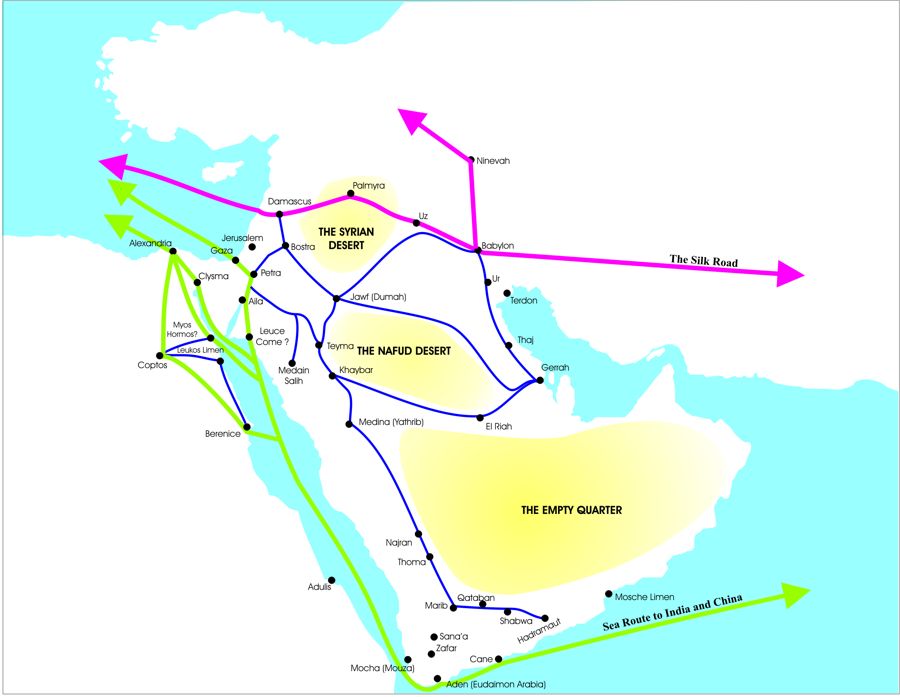
A map of major trade routes during the Nabataean Empire
Miscellaneous Topics about Trade with Asia
There are few links that directly connect the Nabataeans with India and China by maritime routes. From early sources we know that the Nabataeans were pirates, and that they later engaged in extensive trade on the Red Sea. At this time, there were no other sea-going Arabs except the Gerrheans. These people used small coastal vessels, and eventually faded from view when the Nabataeans completely dominated the frankincense trade.(100 BC - 200 AD)
The next solid piece of information comes from Arab and western history where we discover Arab traders trading with places as far away as China. Six hundred years after the Nabataean dominated the maritime trade routes we find a community of over 100,000 Arabs living in Canton China. These Arabs were engaged in sea trade with Arabia. What happened in between? This has been one of the subjects that I have been struggling with for several years now. In time a more clear picture may emerge, but there are some interesting facts that should be considered.
Ninth Century Dhow Shipwrecked in Indonesia
In 1997 fishermen just north of the port of Tanjung Pandan on the Indonesian island of Belitung, (between Sumatra and Borneo) discovered an ancient ship wreck. From their fishing nets they recovered a number of distinctly colored bowls and ewers which could be easily identified as originating from the Changsha kilns of Hunan province in China. Changsha pottery was only produced during the later years of the Tang Dynasty (AD 618-906). This allowed archeologists to get a close fix on the date that the ship might have sailed. The ship contained many other goods, including star anise (Illicium anisatum), a distinctly Chinese export.
Excavations at the Tang city precinct of Yangzhou have yielded a significant quantity of Tang ceramics such as sancai ware. Northern whiteware, painted ware from Changsha, green glazed ware of the Yue type and even pottery from Persia. (Pinger, 1994:8) These finds, at an ancient Chinese port known to have housed a large contingent of foriegn merchants, provide an excellent corollary to the wreck. Nearly all of the ceramic types recovered from the Belitung cargo were loaded at Tangzhou during Tang times, and the fact that they all occur together in one wreck shows that these wares were exported simultaneously.
Tang ceramics have been found in south-east Asia, the Indian subcontinent, Sri Lanka, the Indus Valley, the Persian Gulf, around the Red Sea, and as far inland as Samarra, the Abbasid capital, and as far west as old Cairo in Egypt, and Antioch on the Syrian coast,(Carswell 1999:2) and as far south as the Comoros Island and Zanzibar. (Rougeulle 1996:161)
Tang ceramics have been found in India, but the quantities are very small (Carswell 199:2l Lam 1990:154). Subbarayalu (1996:113) asserts that the earliest Chinese ceramics to be found in southern India date to the eleventh century AD. The archaeological evidence then points to the Belitung ship as traveling to Arabia. (Flecker:2001:348)
Maritime Trade Routes to China and India
There are three possible maritime trade routes between the western Indian Ocean and China.
- Arab and Indian merchants could have voyaged to the western shores on the Isthmus of Kra, part-way down the Malay Peninsula, where they could have taken on a Chinese cargo, either transshipped up the Strait of Malacca from the South China Sea, or brought overland from ports on the eastern side of the isthmus. (Flecker 2001:350)
- Alternatively, they could have loaded their cargoes at an entrepot such as Palembang before re-crossing the Indian Ocean to their home ports.
- A third possibility is that they traded directly with China, perhaps via a south-east Asian port. All of these routes could have been used simultaneously.
Bronson (1996:181) argues that, with the great quantity and variety of Chinese wares, Middle Eastern glass and glazed pottery at Paem Pho and Ko Kho Khao on opposite sides of the Isthmus of Kra, these must have been the main entrepots (a commercial center where goods are received for distributions, transshipment, or repackaging) on the most frequently used trade route between China and the Middle East.
An Arab source, the Muruj al-Dhahab, written by Mas’udi in AD 956 states: (Guy 1990:13)
“The ships from Basra, Siraf, Oman, India, the islands of Zabaj and Sanf came to the mouth of the river of Khanfu (Guangzhou, old Canton China) with their merchandise and their cargo (before AD 877-878). Then the trader went by sea to the land of Killah (Kedah) which is approximately half way to China. Today this town is the terminus for Muslim ships from Siraf to Oman, where they meet the ships which come down from China, but it was not so once… This trader then embarked at the city of Killah on a Chinese ship in order to go to the port of Khanfu.”
According to Chinese records, the Perisans (Po’ssi) and the Arabs (Ta’shish) seem to have dominated maritime trade with China at the height of the Tang Dynasty. (Guy 1990:7) They established settlements at Guangzhou, where they were sufficiently strong enough to sack the city in AD 758 and then evacuate as an act of retaliation against corrupt port officials. Chinese rebels then sacked Tangzhou in AD 760, reputedly killing thousands of Persians and Arab merchants. (Wang 1998:76)
In AD 878 Huang-Chao burned and pillaged Guangzhou and murdered the foreign merchants along with many Chinese civilians. (Wang 1998:78). Arab geographer, Abu Zaid recorded that ‘no less than 120,000 Muslims, Jews, Christians, and Parsees perished.’ (Hourani 1995:76).
After this, it seems that the Arab merchants abandoned the South China Sea and relied on south-east Asian shipping to supply the ports on either end of the Isthmus of Kra. These ports could have been operating for centuries, and the Arabs could have cut out the middle men by sailing directly to China, and they did this until they were forced to leave in 760 AD.
Chinese traveler I-Ching, voyaged from China to Sumatra in AD 671 (Hourani, 1995:46) and wrote: “In the beginning of the autumn … I came to the island of Kwang-tung, where I fixed the date of meeting with the owner of a Po-see (Arab) ship to embark for the south… at last I embarked from the coast of Kwang-chou (Guangzhou).“
Thus we can conclude that 400 years after the Nabataeans started Arab maritime trade, Arabs from around the peninsula were entering into trade with Asia. As the Roman Empire crumbled, and their trade structures evolved, more and more Arab groups entered into maritime trade between the Europeans and the east.
Cross India Sailing
Ships often gathered at Muscat port before sailing directly across the Indian Ocean with the monsoon to Quilon on Southern Malabar. Other vessels took the coastal route, along the northern short of the Arabian Sea and down the west coast of India, but this route was fraught with many dangers, mainly from pirates. (See Ancient Sailing and Navigation)
From Malabar passage was made either to Ceylon, the Island of Rubies, or directly to the Nicobar Islands where water was taken on.
The next port of call was Kalah Bar (Kedah). Ships sailed from there to Sumatra, Java and on to China. Those going directly to China proceeded down the Malacca Strait stopped at Tioman Island for water and then carried on across the South China Sea to ports on Champa. From there they sailewd to Canton, either via Hanoi or via the more direct route past the dangerous Paracel Reefs. The return voyage followed the same route in reverse. (Hourani and Flecker)
Middle Eastern traders used either the Malacca Strait, or the Sunda Strait on their journey, stopping at Srivijava. (Guy 1990:6) for supplies. Fa Hsien boarded an Indian ship that could carry 200 passengers for his voyage from Sri Lanka back to China in AD 413. (Guy 1990:2)
Later a Tang Dynasty text stated that the ships of Sri Lanka (Ceylon) were the largest of the foreign vessels (Wang 1998:99). In AD 748 the Chinese monk Jianzhen noted that on his way from Hainan to Guangzhou he saw countless seagoing vessels from India, Persia, Kunlun (south-east Asia) and other countries. (Lam 199):151)
In my papers, ‘Arabia’ in Ancient History, I explore the concept that the ancient people had about the term ‘Arabia’ and point out how this very often referred to the Nabataean people. By 600 AD, the term had changed meanings as Muhammad and Islam rose to prominence, and term came to refer to all Islamic people in the Arabian Peninsula. From this, I conclude that most of the early Arab maritime traders were of Nabataean origin, as the other Arab maritime powers did not come into being until around the time of the coming of Islam.
Lessons from Economy
A detailed study of any nation’s economics could fill volumes. Needless to say, there are several simple rules of economics that have governed nations since the beginning. Fundamentally, a nation’s economic strength can come from two sources… outside or inside income. By carefully studying these sources, economists can determine the strength of the nation’s economy.
Inside Income
In order for an ancient nation’s economy to grow, it needed cash from outside sources. One method of obtaining new cash was to export local resources or services that the nation could produce. The easiest form of this was mining. Ore could simply be extracted from the ground and sold abroad for easy cash, or manufactured into goods that could be sold. Another easy form of this was exporting agricultural products such as grain or sheep and cattle.
Outside Income
In the ancient world there were two ways to stimulate a nation’s economy from the outside. The first was military conquest. Many ancient kings used this basic rule of thumb: Attack the enemy and take his resources. And so, great civilizations swept back and forth across the pages of ancient history, each swallowing up smaller nations, and absorbing their resources. As they expanded, their economy grew, flush with gold and silver taken from the nations they conquered, as well as from the slaves that were captured. Since so much of ancient industry was extremely labor intensive, a constant supply of new slave labor was needed in order to build and maintain a great civilization. Frequent plagues often reduced the available labor pool, and the kings needed to conquer new nations to replenish their labor pool. Sometimes these nations were conquered for their material resources, and were made serf nations. Other times, the conquering nation simply rounded up all the healthy males and females, and hauled them off to their own land to replenish the labor pool. So, whether they made the defeated nations provide them with resources, or simply enslaved them, the civilizations that conquered their neighbors grew rich and powerful.
The second source of outside income was that of trade. If you had something to sell, or if you could purchase goods cheaply from a neighbors on one side of your civilization, and sell it to a neighbor on the other side of your civilization, you could profit handsomely. If you managed to gain a monopoly on a certain item, you could raise the price of your goods to whatever your neighbor could pay. While trade sounds great to us, it was fraught with all sorts of dangers. First, thieves and pirates would attempt to steal your goods while in route. Secondly, you customer might find out where your source was, and exclude you as the middleman. Third, if you pushed the price too high, your customer might attack you and simply take the goods. Fourth, you might start using the goods yourself, and end up only importing and not exporting, thus ruining your trade business.
When examining the economy of the Nabataean Empire, we must consider both the inside and outside sources of income as these were important to who and what the Nabataeans were.
Nabataean Inside Income
Bitumen
Nabataeans controlled the entire known worldwide production of Bitumen. This bitumen was used for embalming, and was extremely valuable to Egypt. (See Nabataean Trade Items)
Horses
Horses were important to the ancients. The Nabataeans not only raised horses, but they bred them, and may have been involved in the development of the Arabian horse. (See The Arabian Horse and the Nabataeans) While Nabataean horses were not used in the Roman army, they were popular in the circuses and racetracks around Roman Empire, as well as for individual use.
Sheep
Diodorus tells us that the Nabataeans maintained vast herds of sheep.
Pottery
Nabataean pottery was unique, high quality, and produced in great quantities.
Mining
Copper was mined from the eastern side of Wadi Arabah, and was exported.
Prostitution
The Zenon Papyri tell us of Nabataean pimps traveling around the Middle East with their collection of prostitutes.
Nabataean Outside Income
Trade from Arabia, Africa, India, and China included incense, spices, and luxury goods. These are examined in Nabataean Trade Items. Many ancient lists exist, such as are found in the Periplus Maris Erythraei is an ancient manual for merchants traveling to India during the Roman Empire. As we mentioned earlier, the Nabataeans seemed to have gained a monopoly on many of these trade items, and as a result accumulated great wealth.
Nabataean Trade
They visited Gadara, Gerasa, Rabbath-Ammon, River of Egypt, and visited Italy, Greece, Rhodes, and Asia Minor. They also visited the Tiber and Maeander Rivers, and the Tigris and Euphrates.
One of their chief seaports was Aila, with its plenitude of spring water and refreshing greenery of date-palms located in the lee of the hills of southernmost Edom at the corner of the Gulf of Aqaba. It was but a few miles east of the remains of Solomon’s seaport, and of others who sailed to fabulous Ophir and back.
The Nabataeans also sailed from Gaza and Ascalon via Caesarea and Alexandria through the Mediterranean to Italy and Greece. In Italy they visited Puteoli, a few miles west of Naples.
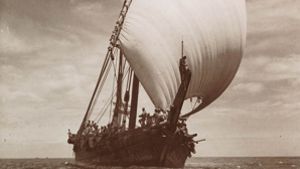
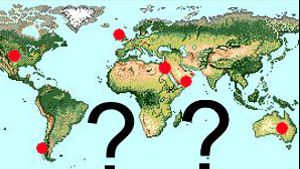
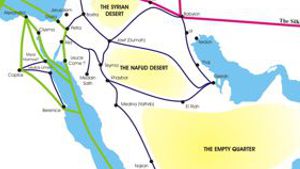
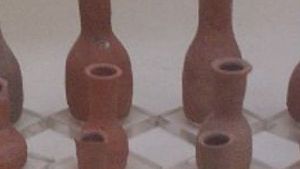

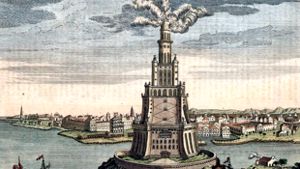




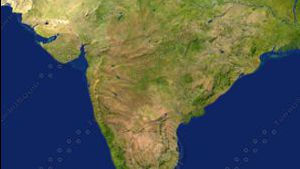
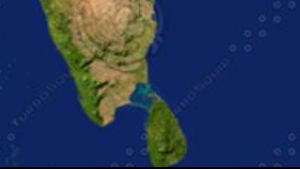

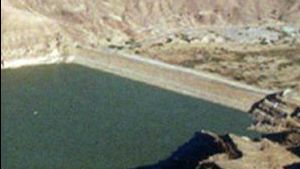
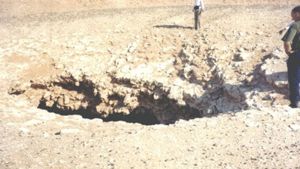

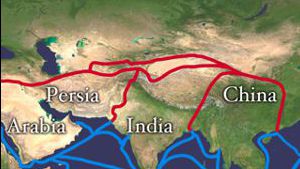
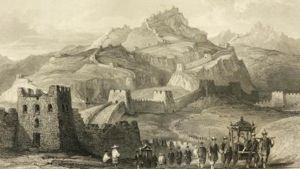
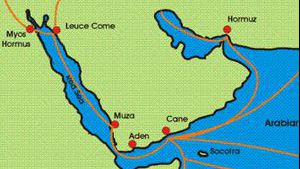
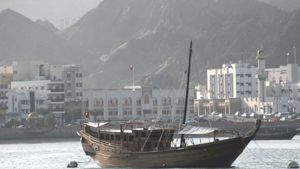




Page Discussion
Membership is required to comment. Membership is free of charge and available to everyone over the age of 16. Just click SignUp, or make a comment below. You will need a user name and a password. The system will automatically send a code to your email address. It should arrive in a few minutes. Enter the code, and you are finished.
Members who post adverts or use inappropriate language or make disrespectful comments will have their membership removed and be barred from the site. By becoming a member you agree to our Terms of Use and our Privacy, Cookies & Ad Policies. Remember that we will never, under any circumstances, sell or give your email address or private information to anyone unless required by law. Please keep your comments on topic. Thanks!